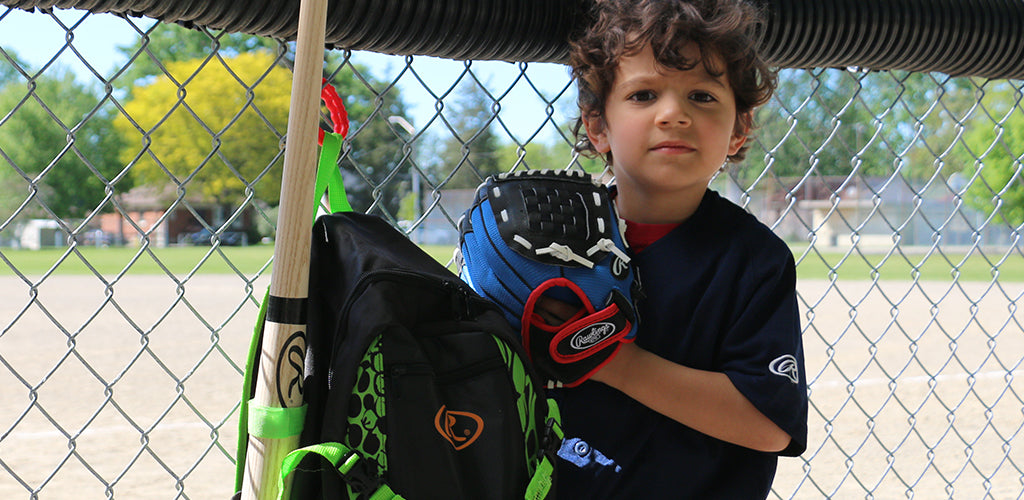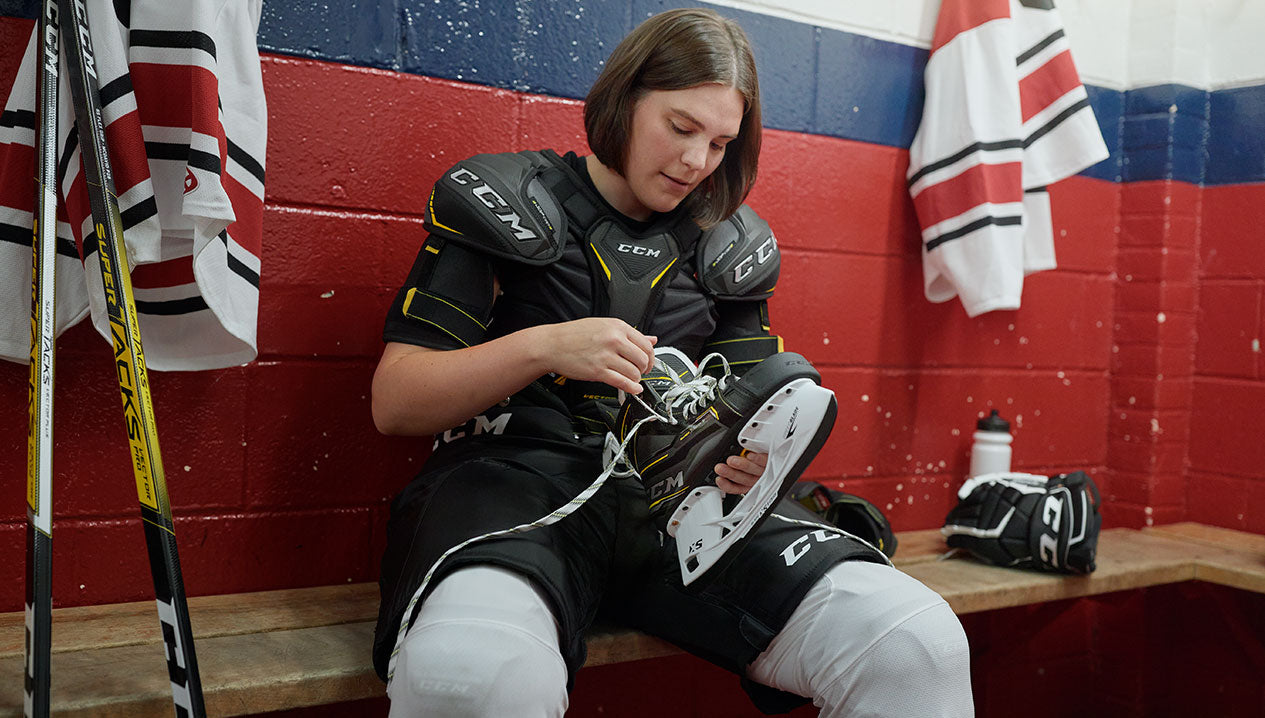How To Choose the Right Size of Baseball Gear for your Child

Baseball is a great sport to teach your child many skills including teamwork, coordination, dedication and risk taking.
If you and your child are new to baseball equipment, the sizing options can be a bit confusing. Leagues designate their players from youngest to oldest with the following levels:
- T-Ball
- Junior Rookie
- Senior Rookie
- Mosquito
- Peewee
- Bantam
- Midget
- Junior
- Senior
Below is a guide to understand the proper sizing and fit tips for the equipment your child will use by level – but always verify with your specific league to confirm rules and regulations.
Kids Cleats & Shoes
Baseball cleats and shoes are designed for stability, protection and comfort. A properly fitted shoe is snug, with no pressure points and is appropriate for your child’s foot width and length, and their level of play.

Players of all calibers will normally be using a PU plastic baseball cleat, but always check with your league rules. Metal cleats are only worn in competitive leagues such as high school, college and major baseball leagues.
|
League |
Shoe Style |
|
Junior Rookie Senior Rookie Mosquito Peewee Bantam Midget |
Rubber Outsole |
|
Junior Senior |
Metal Cleat |
Kids Bat Barrel Size
The length of a bat gives the player a greater reach across the plate to hit the pitched ball. Bats come in different lengths and weights and getting the right one will perform to enhance your child’s skill and strength. A bat that is too long or too heavy will compromise your child’s swing and technique, and alter that perfect ratio of weight, speed and power.

A medium to large size barrel will allow your child to make consistent contact with the ball. A smaller bat barrel requires more skill to hit the ball on the sweet spot.
Having a bat that is tailored to your child’s size, strength and skill level will build their confidence as they learn and improve their batting skills.
|
League |
Bat Barrel Size & Length |
|
Junior Rookie Senior Rookie Mosquito |
2 ¼” with up to 32” length |
|
Peewee |
2 5/8” |
|
Bantam “A & AA” Bantam “AAA” |
2 5/8” or Open No Regulation |
|
Midget Junior Senior |
No Regulation |
Kids Baseball Bat Weight
When choosing a bat for the new-to–the-game player, it is critical to get the proper Drop Weight for their size and skill level. The Drop Weight is the length minus the weight of bat: all you need to know is that the larger the drop weight, the easier it is for your child to make constant contact of the bat with the ball. For example, a -10 bat and -12 bat are common drop weights for kids starting baseball, while an elite level player would use a -3 or -2 drop weight.
A way to test the weight of the bat is to have your child hold the bat out in front of him/her (as though pointing at the pitcher) with one hand just above the handle for 10-20 seconds. If he/she can do this without the arm shaking or the bat dropping, the bat is probably the right size. If the arm shakes or the bat drops, it is too heavy.
Bat Construction
Generally, kids can use an Aluminum or Composite bat, but refer to your leagues rules.
Aluminum bats are lighter and ready to go right out of the wrapper. Aluminum bats should be used in weather that is 15 degrees C or warmer. If the weather is colder, aluminum is more likely to dent and vibrate in the hands when contact is made with the ball.
Composite bats are not as temperature sensitive as aluminum. The bats also makes a different sound when the ball hits it. Once a composite bat is “broken in” it will be more lively and will rebound the ball better than aluminum. Composite bats are made of carbon fiber, graphite and fiberglass and deliver high performance, usually at a higher price tag.
|
League |
Weight |
Bat Type |
|
Junior Rookie Senior Rookie |
Up to -13 |
Aluminum |
|
Mosquito |
Up to -13 |
Aluminum or Composite |
|
Peewee |
Up to -10 BBcore |
Aluminum or Composite |
|
Bantam Bantam |
-3 Bcore No Regulations |
Aluminum/Composite/Wood Wood Bat |
|
Midget Junior Senior |
No Regulations |
Wood Bat |
Kids Baseball Gloves
A youth glove is designed for younger players with smaller hands, and have shorter, narrower fingers that are suitable for players up to approximately 12 years old. Pricing will vary depending on the materials used to make the glove, with synthetic materials offered at a low cost entry point, up to Kobe leather gloves that are master crafted.

Playing catch is the traditional way of breaking in your glove, but can take a long time. For a faster break in on leather gloves, check out the Mizuno Ball Steaming process.
|
Age |
Infield |
Outfield |
|
8 & Under |
9” |
11” |
|
9-13 Years |
9”-10” |
11”-12” |
|
High School & Adult |
10.5”-11.5” |
12”-12.5” |
Kids Baseball Helmet Sizing
The National Operating Committee on Standards for Athletic Equipment (NOCSAE) is the worldwide safety standard for batting helmets. Testing involves creating a 70 mph impact on different areas of the helmet using both softballs, and baseballs. Manufacturers have created highly protective helmets to meet these standards.
To find the correct helmet size, measure the circumference of your child’s head above the ears and refer to the conversion chart below. These are an approximation as some brands may differ slightly because of padding and shell design.

There should be about a finger width between the eyebrows and the bill of the helmet, and the bill should sit evenly, neither tilting forward or back, nor side-to-side. In Canada, all players under the age of 16 years old must use a chin strap. The chin strap must be done up snugly, securing the helmet to the head, allowing for no movement.
The main thing to remember is if it doesn't fit, it doesn't protect.
|
Size |
Circumference |
Helmet Size |
|
X-Small |
20-20 ½” |
6 3/8-61/2 |
|
Small |
20 ¾-21 1/24” |
6 5/8-6 ¾ |
|
Medium |
21 ½-22” |
7 1/8-7 1/4 |
|
Large |
22 1/4-22 3/4” |
7 3/8-7 1/2 |
|
X-Large |
23-23 ½” |
7 3/8-7 1/2 |
For expert advice on baseball gear and equipment that is right for your game, level of play, and budget, come see us at your local Source for Sports baseball store near you. We Fit Your Game.
Join Source Nation to get the latest news on product launches, Source Exclusive product lines, tips and tricks for parents and players, and more!



